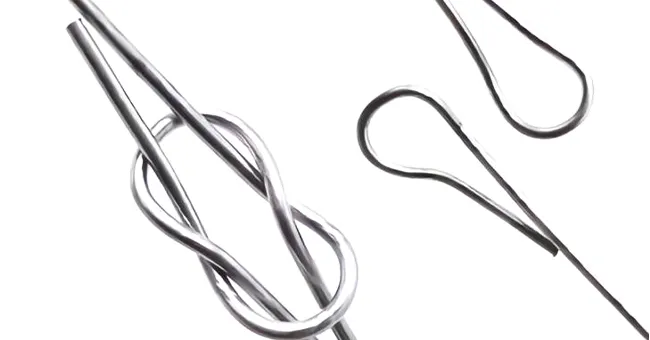-
 Phone:
Phone: -
 Email:
Email:

Exploring the Benefits and Applications of Single Loop Baling Wire in Various Industries
Single Loop Baling Wire An Overview
Baling wire is an essential component in the agricultural and recycling industries, particularly as it relates to the bundling and securing of materials. Among the various types of baling wire available, single loop baling wire has gained popularity due to its unique design and relevant applications. This article explores the characteristics, applications, and advantages of single loop baling wire.
What is Single Loop Baling Wire?
Single loop baling wire is a type of wire that is specifically crafted to create loops at each end, forming a single continuous wire with two loops. This design allows for easy handling, rapid securing of bales, and efficient tying of various materials, ranging from hay and straw in agricultural settings to cardboard and plastic in recycling operations. The wire is available in various gauges and materials, ensuring it can handle different weight capacities and environmental conditions.
The production of single loop baling wire typically involves using high tensile strength steel, which offers durability and resistance to wear and tear. This robustness is important as baling operations often face harsh conditions, whether in a field or a waste management facility.
Applications of Single Loop Baling Wire
Single loop baling wire is utilized in several industries due to its versatility. In agriculture, farmers use it to secure bales of hay, straw, and other forage materials for easy transport and storage. The wire’s ability to withstand tension makes it ideal for holding heavy bales together, preventing them from falling apart during handling or transportation.
single loop baling wire

In the recycling sector, single loop baling wire is crucial for bundling materials such as cardboard, paper, and various plastics. The wire helps maintain the integrity of these bundles during sorting and processing, ensuring that waste management operations run efficiently and effectively. Moreover, the single loop design enables quick and easy tying and untying, promoting seamless workflow in busy recycling facilities.
Advantages of Single Loop Baling Wire
One of the primary advantages of single loop baling wire is its ease of use. The pre-formed loops at each end simplify the tying process, allowing workers to quickly secure bales without needing additional tools or equipment. This efficiency translates into time savings and increased productivity in both agricultural and recycling contexts.
Another notable benefit is its strength and durability. The high tensile strength of the steel used in single loop baling wire ensures that it can withstand significant loads without breaking or stretching. This resilience is particularly important in environments where materials are frequently handled and transported.
Additionally, single loop baling wire is cost-effective. While the initial investment may vary based on specifications, the wire’s longevity and reliability often lead to reduced overall costs in operations. This is particularly true in the agricultural sector, where minimizing the cost of materials directly contributes to overall profitability.
Conclusion
Single loop baling wire serves as a vital tool across various industries, offering an effective and efficient solution for binding and securing materials. Its simple design, strength, and ease of use make it an ideal choice for farmers and recycling operators alike. As sustainability and efficiency become increasingly important across sectors, the relevance of robust solutions like single loop baling wire continues to grow. Whether in the fields or in recycling plants, this wire proves indispensable in the ongoing efforts to manage resources and reduce waste.
-
Wire Mesh for Every Need: A Practical SolutionNewsJul.25,2025
-
Steel Fences: Durable, Secure, and Stylish OptionsNewsJul.25,2025
-
Roll Top Fencing: A Smart Solution for Safety and SecurityNewsJul.25,2025
-
Cattle Farm Fencing Solutions for Maximum SecurityNewsJul.25,2025
-
Affordable Iron Binding Wire SolutionsNewsJul.25,2025
-
Affordable Galvanized Wire SolutionsNewsJul.25,2025
-
Wire Hanger Recycling IdeasNewsJul.25,2025








